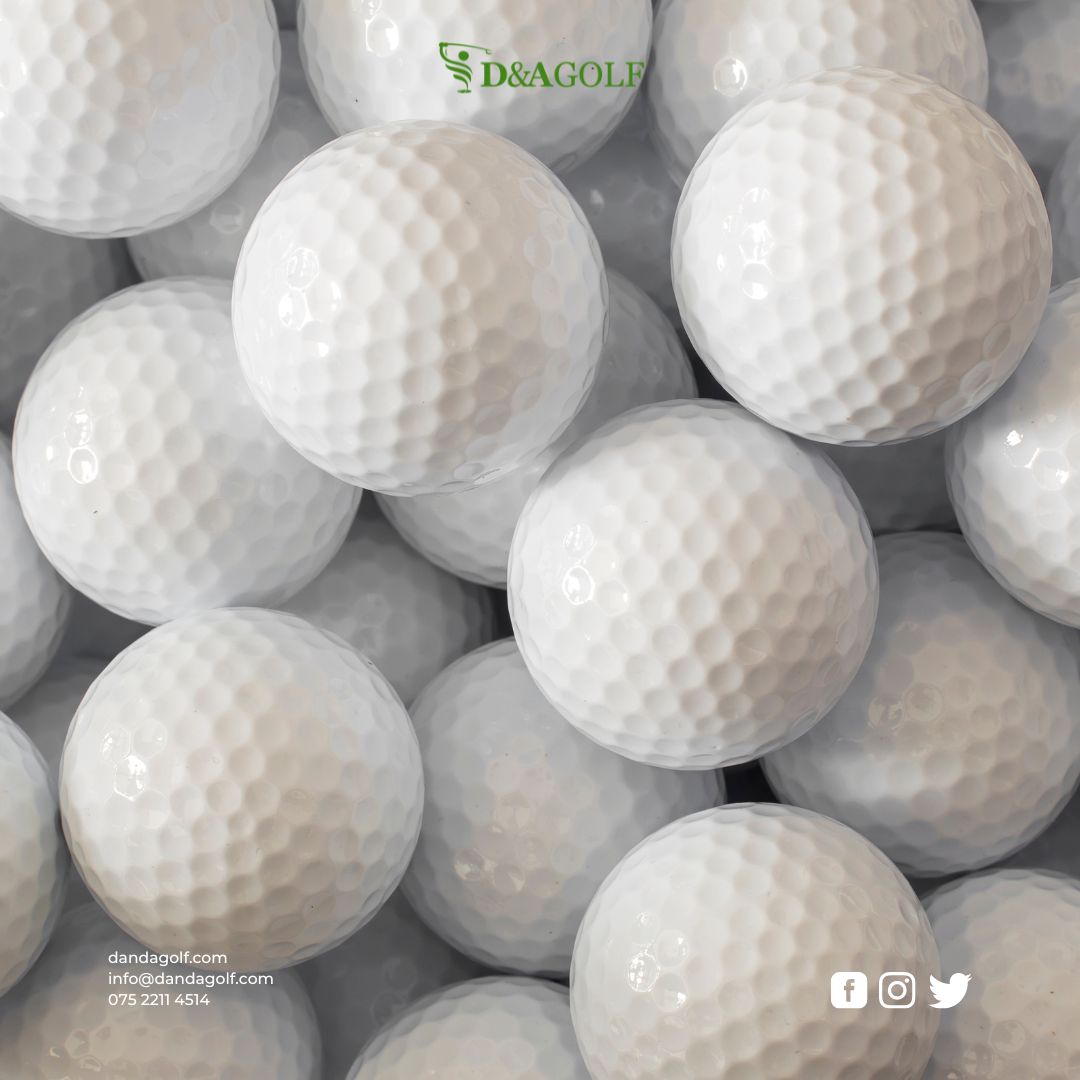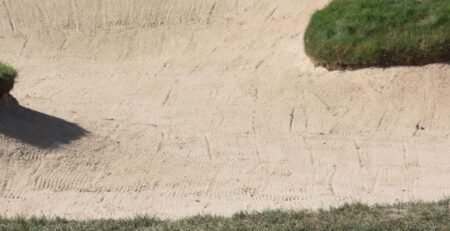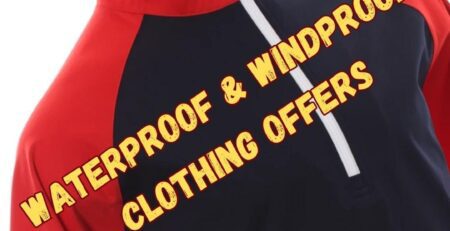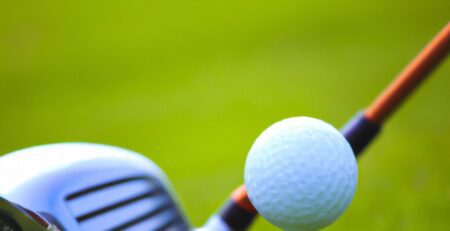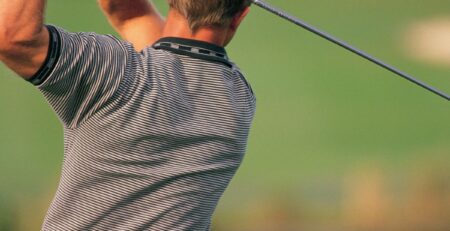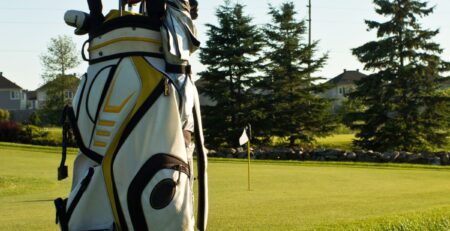How to Choose the Right Golf Ball for Your Skill Level: A Guide to Srixon AD333, Titleist Tour Soft, and More
Are you struggling to find the perfect golf ball for your game? Look no further! Choosing the right golf ball can make a significant difference in your performance on the course.
With so many options out there, it’s easy to feel overwhelmed and unsure of where to start. That’s why we’ve put together this guide featuring some of the best golf balls on the market, including Srixon AD333, Titleist Tour Soft, and more. Whether you’re a beginner or an experienced player, this article will help you understand what factors to consider when selecting a golf ball that suits your skill level and playing style. So grab your clubs and let’s tee off into the world of golf balls!
Choosing the Right Golf Ball for Your Skill Level
Choosing the right golf ball is crucial to your game, as it can impact your distance, accuracy, and overall performance on the course. Golf balls come in a variety of types and designs that cater to different skill levels and playing styles.
For example, if you’re a beginner or have a high handicap, using a softer golf ball with low compression can help you achieve more distance while reducing spin. On the other hand, experienced players may benefit from higher compression golf balls that offer better control and responsiveness.
The cover material of a golf ball also plays an essential role in its performance. Some covers are designed for more spin around the greens while others provide less spin for longer shots off the tee.
Moreover, swing speed is another factor to consider when choosing a golf ball. Slower swing speeds require lower compression balls for optimal performance whereas faster swing speeds require higher compression balls to maximise energy transfer.
Callaway Chrome Golf Balls
Callaway Chrome Golf Balls are designed to provide a balance between distance and feel. These balls feature a dual SoftFast core that maximises ball speed while minimising spin for longer, straighter shots off the tee.
The mantle layer of these golf balls helps to control spin on shorter shots around the green, providing more accuracy and stopping power. The thin urethane cover adds an extra level of softness for improved feel on all types of shots.
One of the major benefits of Callaway Chrome Golf Balls is their versatility. They are suitable for a wide range of player skill levels, from mid-handicappers to professionals. The low compression design allows players with slower swing speeds to achieve maximum distance without sacrificing feel or control.
These golf balls also perform exceptionally well in windy conditions due to their reduced spin rates. Players who struggle with slicing or hooking the ball will appreciate the added forgiveness provided by these golf balls’ design.
Srixon Golf Balls
Srixon Golf Balls have been a popular choice among many golfers, thanks to their impressive performance and technology. These balls are specially designed to cater to different skill levels, making them an excellent choice for beginners and experienced players alike.
One of the key benefits of Srixon Golf Balls is their Soft Feel technology that offers exceptional feel and control around the greens. The ball’s core is soft yet firm enough to provide maximum distance with every hit. Moreover, Srixon Golf Balls feature advanced aerodynamics that help in reducing air resistance for consistent ball flight.
For those seeking more spin control on approach shots and better accuracy off the tee, the Srixon Z-Star series is an ideal pick. With its multi-layer construction featuring a soft urethane cover, these balls offer unmatched spin rates without compromising on distance or feel.
On the other hand, if you’re looking for a budget-friendly option that still delivers great results on the course, then consider trying out Srixon Soft Feel golf balls. They come equipped with cutting-edge Energetic Gradient Growth Core technology that ensures high launch angles with minimal effort while also providing good stopping power around the greens.
Titleist Tour Soft Golf Balls
Titleist is a well-known brand when it comes to golf balls, and their Tour Soft Golf Balls are no exception. These golf balls offer excellent distance and control, making them an ideal choice for players with moderate swing speeds.
One of the key benefits of the Titleist Tour Soft Golf Balls is their soft feel. When you strike these golf balls, you’ll immediately notice how they compress slightly on impact, giving you a satisfying feedback that can help improve your game. Additionally, this soft feel also allows for better spin control on short shots around the green.
Another advantage of these golf balls is their high-quality cover design. The thin 4CE grafted cover ensures that there’s less energy lost during compression, translating to more distance off the tee. The cover also features spherically-tiled 342 cuboctahedron dimple pattern which helps promote consistent ball flight even in windy conditions.
Taylormade Soft Response Golf Balls
TaylorMade Soft Response Golf Balls are specially designed for golfers who have a slower swing speed and require maximum distance off the tee. The soft feel of this ball provides excellent feedback, ensuring that players can easily control their shots around the green.
One of the biggest benefits of using TaylorMade Soft Response Golf Balls is that they offer exceptional accuracy on approach shots, making them ideal for players looking to improve their short game. Additionally, these balls feature a low compression core that helps increase speed while reducing spin, leading to longer drives and straighter ball flights.
What’s more, TaylorMade has designed these golf balls with an ionomer cover that provides superior durability without compromising on feel or performance. This makes them perfect for those who want a high-quality ball without breaking the bank.
The Different Components of a Golf Ball
Understanding the construction of a golf ball can help you choose one that fits your gameplay. Golf balls are made up of three main components: the core, mantle, and cover. The core is typically made from rubber or synthetic materials and affects how far and fast the ball will travel when hit.
The mantle is located between the core and outer cover, adding an extra layer to improve accuracy and control during flight. This component also influences spin rate depending on its thickness.
The outer cover provides protection for the inner components while providing grip for enhanced shots around greens. It’s usually made from ionomer or urethane materials; with urethane covers being more expensive but providing better feel during short game shots.
How Each Component Affects the Performance of the Golf Ball
When it comes to golf balls, every component plays a crucial role in determining its performance. The core of the ball is responsible for the initial velocity and energy transfer upon impact, while the mantle layer affects spin rates and consistency.
The cover of a golf ball determines its durability and feel around the greens. A softer cover provides more control on short shots but may wear out faster than harder covers. On the other hand, firmer covers offer greater distance but less feel when chipping or putting.
The number of layers also impacts how a golf ball performs. Multi-layered balls have different materials in their construction that work together to create various shot outcomes. For example, some multi-layered balls have an outer layer designed to increase distance with low compression cores that help reduce excessive spin rates.
Dimples on a golf ball affect its aerodynamics by reducing drag forces which allows for better lift and trajectory through the air. The shape and size of these dimples can vary between brands resulting in varying levels of flight stability.
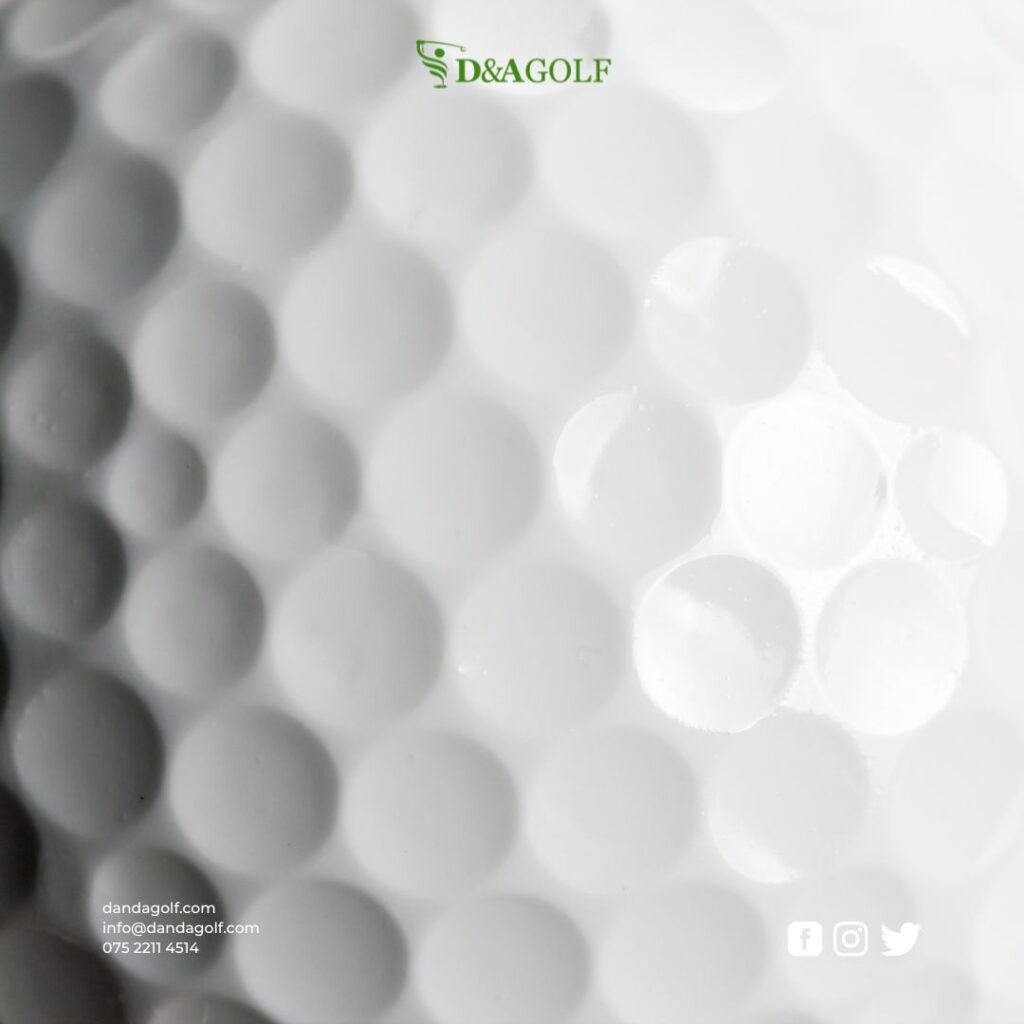
How Swing Speed Affects the Selection of a Golf Ball
The swing speed is a critical factor in determining the right golf ball for your game. The velocity at which you hit the ball impacts how it behaves in flight and upon landing.
Golf balls are designed with specific compression ratings to cater to different swing speeds. A high compression ball requires a fast swing speed, while a low compression ball is suited best for slower swings.
If you have a slow to moderate swing speed, consider using Callaway Chrome Soft or Srixon Soft Feel golf balls. These provide better control and distance on shots but lack feel around the greens.
For those with faster swings, Titleist Tour Soft or Taylormade Soft Response may be more suitable options as they offer more spin and feel around the greens.
Which Golf Balls are Best Suited for Different Swing Speeds
When it comes to selecting the right golf ball for your game, one important factor to consider is your swing speed. Golf balls are designed with different compression levels, and choosing a ball that matches your swing speed can help you achieve maximum distance and accuracy.
For those with slower swing speeds, the Callaway Chrome Soft Golf Balls are a popular choice. These low compression balls are designed for maximum distance even at slower swing speeds. They also offer great spin control around the greens.
For mid-range swing speeds, Srixon Golf Balls are often recommended. The Srixon Q-Star Tour golf balls have a compression rating of 72, making them perfect for players who hit their drives between 90-100 mph.
If you have a faster swinging style on the course, Taylormade Soft Response Golf Balls may be just what you need. With an ultra-low compression design that maximises energy transfer on impact, these balls can add more yardage to every shot.
Titleist Tour Soft Golf Balls cater towards higher swing speeds around 105 mph or above providing controlled flight off long clubs while promoting more spin and feel in short irons and wedges due to its innovative cover technology
How Different Golf Balls are Designed
Different golf balls are designed to cater to different playing styles. For example, players who tend to slice the ball may benefit from a golf ball that has a softer cover and produces less spin off the tee. This can help keep their shots straighter and prevent them from veering off course.
On the other hand, players who struggle with distance may want to consider a golf ball that has a larger core or more layers in its design. These types of golf balls have been engineered specifically for maximum energy transfer upon impact, which can lead to increased distance on each shot.
Players who prefer a low trajectory might opt for a harder golf ball that creates less lift when struck. Conversely, those looking for higher launch angles may want to try out softer balls with multi-layer constructions.
Golf Balls for Different Types of Golfers
When it comes to choosing the right golf ball, your skill level plays a crucial role in determining which ball will help you perform at your best. Golfers with high handicaps typically have slower swing speeds and need a ball that can generate more distance with less spin. In this case, balls like the Srixon Soft Feel or Callaway Chrome Soft would be great options as they offer low compression and soft feel for better control.
On the other hand, golfers with lower handicaps often have faster swing speeds and require a ball that can handle higher levels of spin while still offering maximum distance. The Titleist Pro V1x or Taylormade TP5X are excellent choices as they provide exceptional greenside control and workability for advanced players.
For those who fall somewhere in between, there are plenty of options available such as the Titleist Tour Soft or Taylormade Soft Response. These balls offer mid-range compression and good all-around performance for golfers looking to improve their game.
How Spin and Trajectory Affect the Performance of a Golf Ball
The spin and trajectory of a golf ball are crucial factors that can significantly affect the performance of your shots. The amount of spin on a golf ball determines how much it will curve in the air, while the trajectory dictates its height and distance.
When hitting a shot, the backspin on the ball helps create lift, causing it to climb higher into the air. This allows for greater distance when hitting driver shots but less control over where it lands due to increased flight time.
Conversely, low spin rates result in shorter carry distances but more accuracy since they don’t get as affected by outside forces such as wind or rain. A lower launch angle also means less backspin which creates more roll-out upon landing making them perfect for chipping and putting near greens.
Golf balls designed for high-handicappers tend to have a higher launch angle with minimal side-spin, resulting in straighter shots that travel farther. Whereas those created for low handicapped players have lower launch angles with maximum sidespin enabling professionals to shape their shots according to their preference.
Which Golf Balls are Best Suited for Different Types of Shots
When it comes to choosing the right golf ball for your skill level, it’s also important to consider the types of shots you typically make on the course. Different golf balls are designed to cater to different types of shots based on their spin and trajectory.
For high launch shots, a golf ball with a softer feel and lower compression is usually preferred. The Srixon Soft Feel Golf Balls are a great option for these types of shots as they offer low spin while still providing ample distance off the tee.
On the other hand, if you tend to make low spin shots, then a tour-level ball like Titleist Pro V1 may be more suitable. These balls have higher compression which results in less deformation upon impact leading to greater control over shot direction.
If you’re looking for an all-around versatile ball that can perform well for both high launch and low spin shots, then Taylormade TP5x or Callaway Chrome Soft could be ideal options. Both offer excellent distance off the tee but still maintain great control around greens thanks to their multi-layer construction.
How Budget Can Impact the Selection of a Golf Ball
When it comes to selecting the right golf ball for your skill level, budget can definitely be a deciding factor. Golf balls vary greatly in price, with some high-end options costing upwards of £50 per sleeve while others are available for less than £20.
It’s important to consider how often you play and your overall budget for golf-related expenses when choosing a ball. If you’re someone who plays frequently or competitively, investing in a higher-end ball may make sense as they generally offer better performance and durability.
However, if you’re just starting out or playing casually, there are plenty of affordable options that still provide decent performance on the course. It’s also worth noting that different brands offer varying levels of quality at different price points.
Which Golf Balls Offer the Best Value
As much as we would love to play with the most expensive golf balls that offer top-of-the-line features, budget constraints can limit our choices. Fortunately, there are plenty of golf balls on the market today that still offer excellent performance without breaking the bank.
One such ball is the Srixon Soft Feel – a soft and low compression ball designed for players who prioritise distance and accuracy. It has a highly resilient core and aerodynamic 338 dimple pattern that provides consistent flight trajectory even in windy conditions. Plus, its thin cover enhances feel around the greens while reducing spin off the driver for longer drives.
Another option is Callaway SuperSoft Golf Balls which come at an affordable price point but do not skimp on quality. These balls feature an ultra-low compression core that delivers maximum distance with reduced spin rates for straighter shots from tee to green. With its Trionomer cover blend material, it offers outstanding durability along with exceptional feel around the greens.
Wilson Ultra 500 Distance Golf Balls could be your go-to if you’re looking for great performance at an economical price point. These two-piece construction golf balls deliver explosive distance off every clubface thanks to their high-energy core technology while maintaining superior control through its durable yet responsive ionomer cover.
Choosing a Golf Ball for Your Skill Level
Choosing the right golf ball is crucial for enhancing your game and getting the most out of each shot. It’s important to consider factors such as swing speed, playing style, skill level, spin, trajectory and budget when selecting a golf ball.
Callaway Chrome Golf Balls are perfect for high handicappers seeking distance and reduced slice. Srixon Golf Balls offer excellent feel with added control on approach shots. Titleist Tour Soft Golf Balls boast exceptional greenside control while Taylormade Soft Response Golf Balls provide superior feel around the green.
Each component of a golf ball has an effect on its performance, so it’s important to understand how they work together to create different types of shots. Experimenting with different golf balls can help you find the one that best suits your game.
Choosing the right golf ball requires careful consideration based on your individual skill level and preferences. Take into account all relevant factors including components like core, mantle and cover; spin and trajectory; swing speed; playing style; as well as budget when making your decision. With proper analysis and experimentation with various brands like Callaway Chrome Golf Balls or Titleist Tour Softs among others – you’re sure to improve your overall game by selecting the perfect fit!

